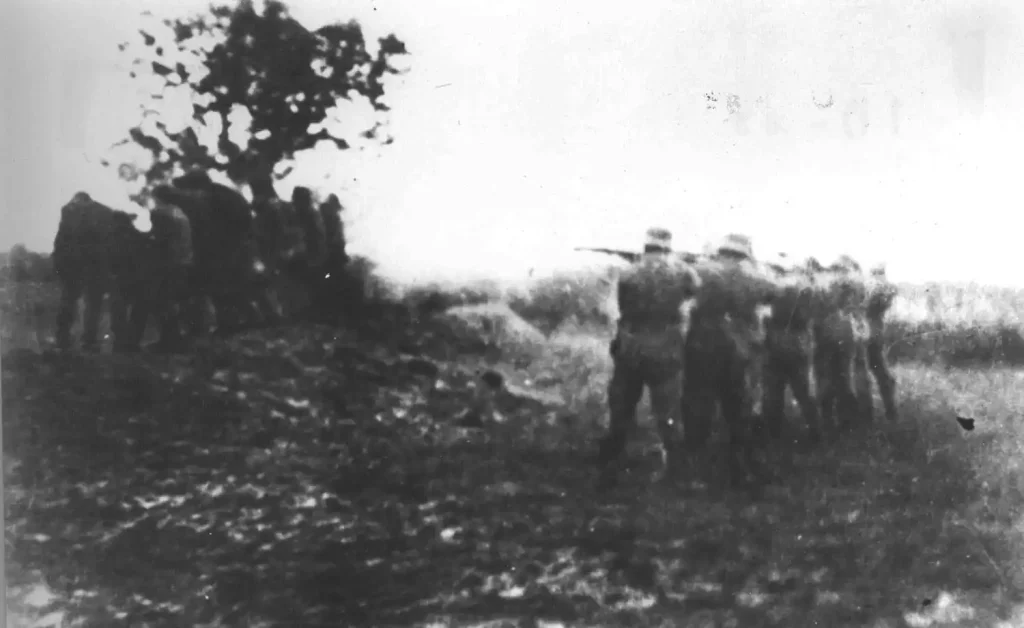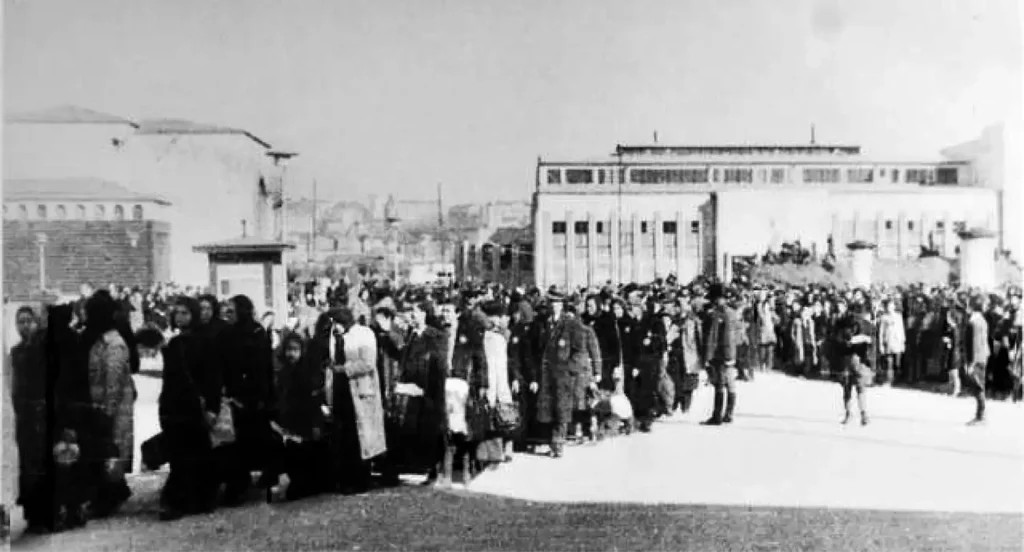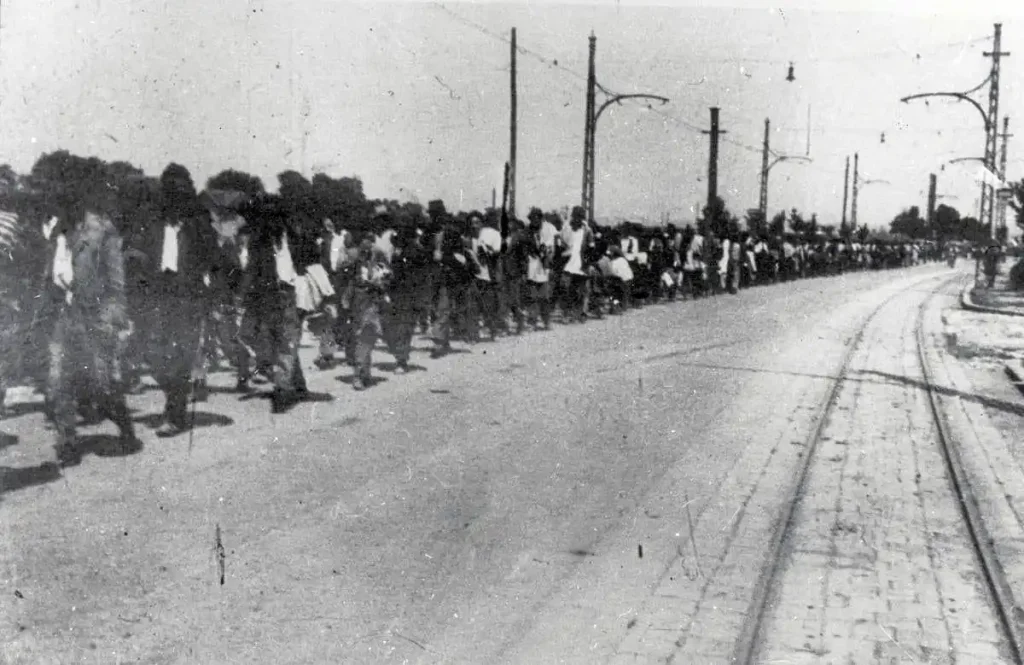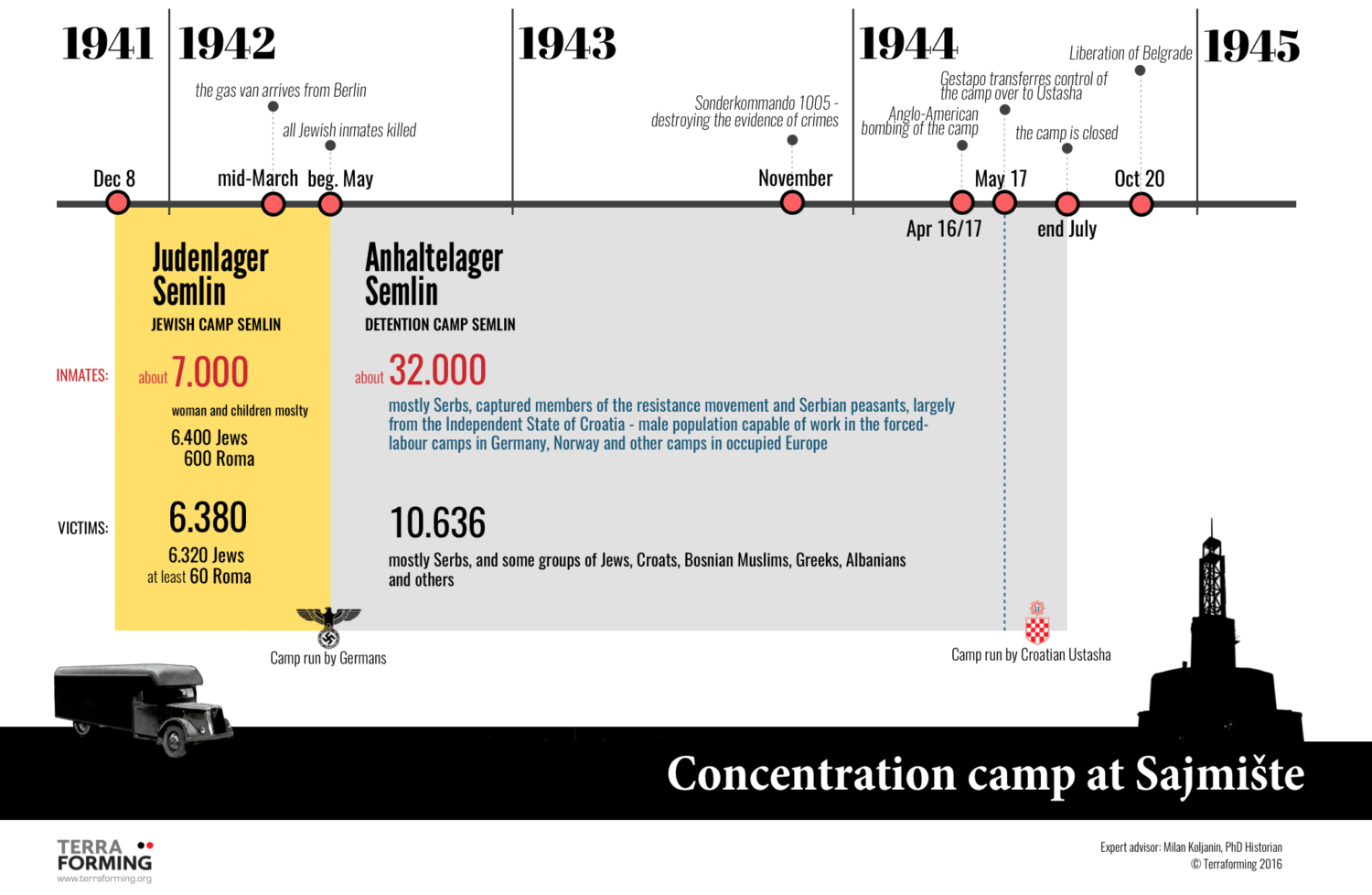1. The Belgrade Fair
The Belgrade Fair was built in 1937. At that time it was a symbol of a new, bright future, a place where Serbia (being a part of Kingdom of Yugoslavia then) was to become a part of the modern Europe.
By building this fair, Belgrade city crossed the river Sava and materialized an urban planning project on the other side of the river for the first time, thus opening a new perspective of development of the city. During the first years of its existence, the fair was attracting many investors and manufacturers, thereby opening a new perspective for development of economy, too. Apart from Yugoslav, new international pavilions were being opened: a Hungarian, a Romanian, a German, an Italian, a Czechoslovakian, a Turkish one… Some of them were leased to certain big companies so that they could have their own pavilions. Enjoying a very modern ambient and its beautiful architecture, a great number of the citizens of Belgrade were frequently visiting the fair to look at exhibits, including some of the brand new technical achievements of the time. Thus a Dutch company “Philips” broadcasted the first television program in the Balkans from their pavilion at the Belgrade Fair. During the Belgrade Fair Aeronautical Exhibition a Czechoslovakian company “Skoda” constructed the tallest steel tower for training of the parachutists in Europe at the time, the tower being 74 meters high. Concerts of classical music and art exhibitions were organized within the space of the fair. Among the Belgrade citizens it was a very popular destination, where they could enjoy not only looking at exhibited products from various parts of Europe, but also a wide range of restaurants and shopping stands.
Crossing the river Sava, the city of Belgrade was about to become a true European metropolis.
But instead of being a road leading to the bright future, the Fairgrounds would soon become a place where people were going to face terrible suffering and death.
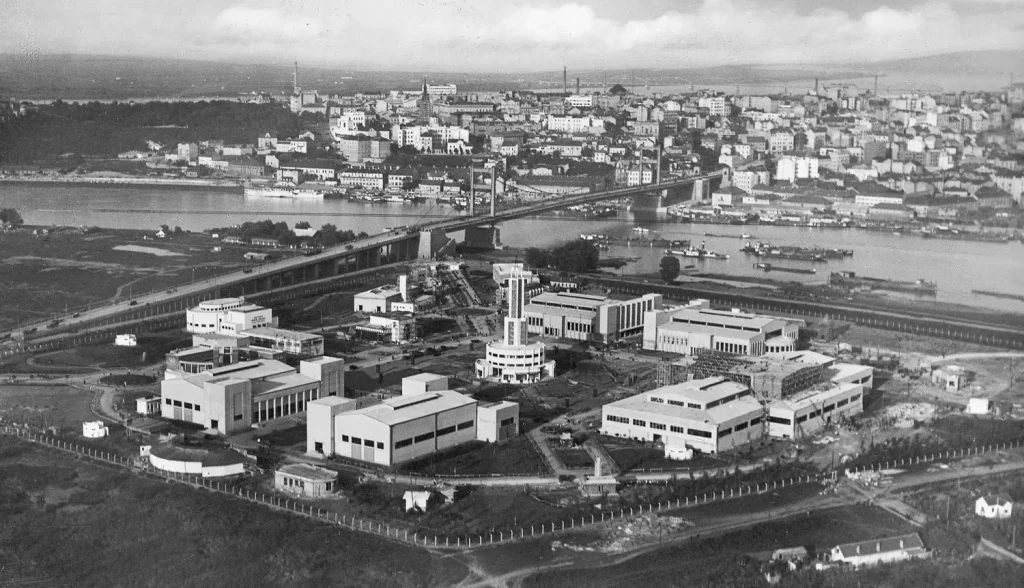
The Belgrade Fair was a symbol of a new, bright future, a place where Serbia (being a part of Kingdom of Yugoslavia then) was to become a part of the modern Europe
2. The Occupation of Serbia
Having succumbed to the pressure of Germany, on the 25th of March 1941 Yugoslav government signed the accession to the Tripartite Pact. But already on the 27th of March in Belgrade and other cities demonstrations broke out, and after a coup d’état was conducted a new government was established which refused to ratify the Tripartite Pact and make alliance with Germany. Consequently, Hitler made a decision to defeat and destroy Yugoslavia ruthlessly both militarily and as a state. Aided by Yugoslav neighbouring countries and supported by its internal enemies, Germany attacked Yugoslavia without declaration of war.
On the 6th of April 1941 the German Air Fleet (Luftwaffe) bombed Belgrade with a special brutality. The bombing of Belgrade continued on the 7th, 11th and 12th of April. More than 2,000 citizens of Belgrade were killed during the German bombing campaign and a large number of buildings were destroyed as well as a great deal of the Serbian cultural heritage. After a short war, historically referred to as the April War, the Kingdom of Yugoslavia was broken up, and Serbia was occupied and divided up into several occupation zones. The largest area was occupied by the Wehrmacht and was organized as separate territory under control of the German Military Administration in Serbia, including the territory of Banat governed by Volksdeutsche, i.e. ethnic Germans living in Banat. The rest of the territory of Serbia came under the rule of Hungary, Bulgaria, the Independent State of Croatia and Italy.
Very soon Germans organized the military occupation administration which included an extended repressive apparatus where the Operative group of the Security Police and Security Service (Einsatzgruppe Sipo und SD) played the major role; its centre being the notorious sub department IV of the German Security Police – Gestapo, within which the Police Department for Jewish Affairs, “Judenreferat”, was established immediately. As they regarded the destruction of the Jews as their first and foremost priority, the Nazis immediately started to carry out their plan to completely annihilate Serbian Jews on the territory under German control, aided by the Serbian quisling regime, too. Under threat of the severest punishment the Jews were ordered to register to be marked by the yellow armbands. One by one anti-Jewish measures were introduced, as antisemitic propaganda was being spread around.
During the summer a resistance movement against the occupation was spreading throughout Serbia. Germans were trying to suppress the uprising with extreme repressive measures towards civilian population and mass reprisal shootings. The civilians were being arrested on a large scale and held as hostages to be shot down by firing squads for a reprisal. It was primarily the Jews, the Roma, the communists and the patriots opposing the occupation and a quisling regime that were targeted to be taken as hostages, though there were others, too. An order was issued that for every German killed 100, and for every wounded 50 hostages should be shot dead. Thus, by conducting the mass reprisal shootings, the Germans were aiming to both suppress the uprising in Serbia and kill as many Jews as possible simultaneously, as a part of a wider plan to destroy European Jews. During the autumn 1941, arrests, round-ups and mass shootings were taking place in Serbian cities. Ordinary people, peasants and even school children were shot in these massacres, too, because “not enough hostages could be found elsewhere” as it was accounted for in one of the German reports.
The camp at Topovske Šupe, on the outskirts of Belgrade, was established in late August 1941. The camp held about 5,000 Jewish men (mostly from Belgrade and the Jews expelled from Banat region) and between 1,000-1,500 Roma men. It was the main “hostage reservoir” for German reprisal shootings. Executions took place at Jajinci, Jabuka or the Deliblato Sands. In just a few months almost all male Jews in the territory of Serbia under German control were executed in the mass reprisal shootings.
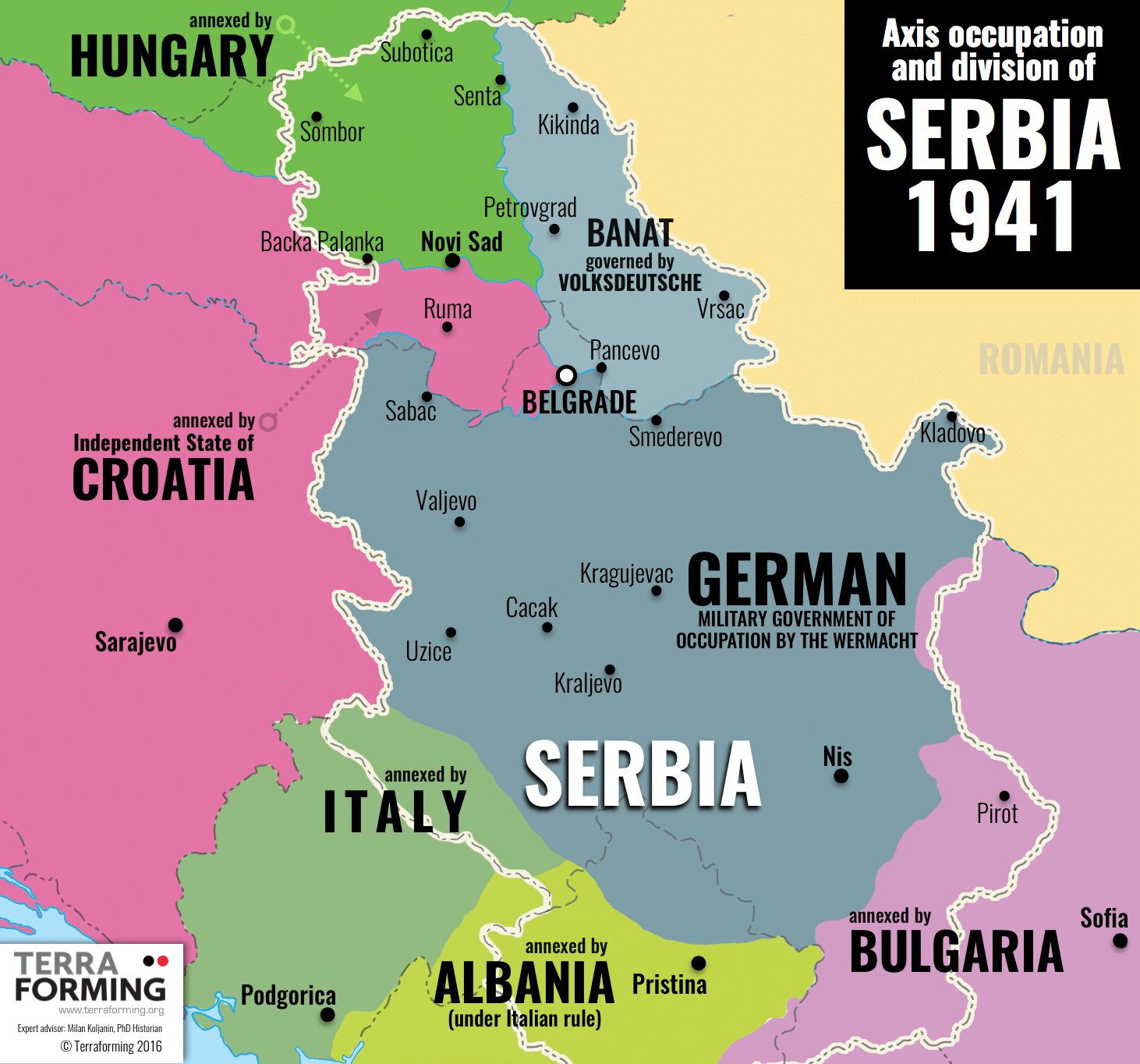
Occupation and division of Serbia by the Axis Powers in 1941
Download the map as PDF
3. The Camp at the former Fairgrounds – Sajmište
The Jewish Camp at Sajmište (Judenlager Semlin)
When the Germans transformed the Fairgrounds into a Jewish camp “Judenlager Semlin” it was a camp for the Jewish women and children. Although being just outside Belgrade, it was situated in the territory annexed by the Independent State of Croatia. But the camp was under German control, run by Gestapo, under the command of SS officers and with German guards, being a part of the military occupation administration of Serbia. Among 6,400 Jewish inmates, most of them, about 5,500, were from Belgrade. The rest of the Jewish inmates were from Banat region and other cities in the territory of Serbia occupied by the Germans. In just a few weeks, from April to May 1942, the Jewish women and children were systematically killed in the gas van (Gaswagen, known as “Dušegupka”). It was a van of mark “Saurer”, specially redesigned and readjusted by the mechanical engineers in Berlin to be used as a mobile gas chamber. This gas van had been prepared to be used in Belgrade and delivered by two SS officers from Berlin. Under false premises that they would be transferred to some other camp where living conditions were better and where allegedly they would meet their husbands and fathers who had been arrested before (in reality all the men had already been killed by that time), groups of 80-100 Jewish inmates, mostly women and children, were lured to get onto the van. Then they would ride in the van across the river Sava towards Belgrade over a temporary pontoon bridge constructed along the King Aleksandar’s Bridge demolished during the bombing of Belgrade. After crossing the pontoon bridge, two drivers, German SS officers, would reconnect the pipes so that exhaust gases, namely carbon monoxide, could enter into an airtight chamber of the van where “the passengers” were locked in. As the SS officers were driving the van through central Belgrade to Jajinci just outside the city, behind them women and children were suffocating with poisonous exhaust gases. By the time they reached Jajinci all “passengers” would have already been dead and their lifeless bodies would be dumped into freshly dug graves waiting ready for them. In this utterly perfidious and brutal way, the Nazis have killed 6,320 Jews, mostly women and children, out of 6,400 Jewish inmates of Judenlager Semlin.
Since the Jewish men were mostly executed in mass shootings during last months, by killing the remaining Jewish women and children in the camp at Sajmište, as the Nazis so cynically put it in their report, “the Jewish question in Serbia was solved”. Thus the death camp at Sajmište became a symbol of the Holocaust and the suffering of the Jews in the occupied Serbia.
At the same time there were about 600 Roma inmates in the camp at Sajmište, out of which at least 60 died during the wintertime, mostly of hunger, cold and disease, while the rest were released later.
Osnovne informacije
- Purpose: destruction of the remaining Jews in the territory of Serbia under German control
- December 8, 1941 - the end of May 1942
- 7.000 inmates - 6.400 victims
Inmates: 6.400 Jews and 600 Roma.
Victims: 6.320 Jews and at least 60 Roma.
Epigraph
The death camp at Sajmište became a symbol of the Holocaust and the suffering of the Jews in the occupied Serbia.
Carbon monoxide poisoning:
- nausea, headache, dizziness,
- disorientation in time and space,
- muscle weakness, disturbed vision,
- muscle cramps, seizures,
- coma, cardiorespiratory failure,
- loss of brain function,
- death
The Detention camp at Sajmište
After the extermination of the remaining Jews in the territory of Serbia under German occupation, the camp at Sajmište was transformed into a detention camp, where most of the inmates were Serbs. The camp was still being run by the Germans. The detention camp was serving the strategic purposes of annihilation of the resistance movement and providing a forced labour for the Hitler’s war machine. Among the inmates of the Detention Camp there were a large number of captured Yugoslav partisans, and partly members of the royalist resistance movement, too; but the largest portion of the inmates consisted of the Serbian population able to work, transferred from the territories where military operations were conducted – predominantly from the Independent State of Croatia. Most of them were brought there to be deported to the force labour and concentration camps in Germany, Norway or in other countries occupied by the Germans. From time to time the camp was used for the temporary detention of the Jews who were being transported to the death camps from the regions occupied by the Germans after Italy had capitulated and from other occupied countries. Groups of captured Greeks, Albanians and others were also inmates of the camp for shorter periods of time.
The Detention camp at Sajmište was infamous for its harsh conditions and cruelty. Although it was not primarily aimed for killing inmates, it was very deadly. One third of the people who entered the camp perished there. The inmates were treated harshly and brutally in extremely bad conditions, dying of hunger, exhaustion and disease being exposed to the constant abuse by the camp guards. Many were beaten to death, while others were shot or hanged.
After the camp was bombed by the allied Anglo-American Air Forces in April 1944, there were many casualties among inmates and the camp was severely damaged. In May 1944 the Nazis handed over the rule of the camp to the Ustasha Police of the Independent State of Croatia, though it was still used mainly for German needs. Since the number of inmates was significantly reduced, and as it was obvious that the war was not going favourably to Germany and its allies as the Yugoslav partisans and the Red Army were getting closer and closer, by the end of July 1944 the camp was abandoned, the rest of inmates being transferred to other smaller camps.
On the 20th of October 1944 Belgrade was liberated by the Yugoslav partizans, aided by the Red Army.
Osnovne informacije
- Purpose: detention camp for the captured members of the resistance movement and Serbian men from the territories where military operations were conducted (largely from the Independent State of Croatia) and their deportation to forced labour and concentration camps
- the end of May 1942 - the end of July 1944
- 32.000 imates - 10.636 victims
Inmates: 32.000 mostly Serbs, Serbian peasants from Independent State of Croatia and captured members of the resistance.
Victims: 10.636 mostly Serbs, and some groups of Jews, Croats, Bosnian Muslims, Greeks, Albanians and others.
Epigraph
The Detention camp at Sajmište was infamous for its harsh conditions and cruelty. Although it was not primarily aimed for killing inmates, it was very deadly. About one third of the people who entered the camp perished there.
4. Memorial Center “Staro Sajmište”
No memorial centre or museum have ever been built on the former campgrounds. For a long time the area where the camp was located was in a very poor condition as a result of disuse and neglect.
In spite of the fact that that it has an important place in the history of the Holocaust, in the post war era, Sajmište was rarely recognised as a site of Holocaust remembrance. In socialist Yugoslavia, while the suffering of Jews during the WWII was recognized and noted, it tended to be interpreted as a manifestation of the broader ‘reign of terror’ instituted by the Nazis against the general civilian population.
There were several attempts and initiatives for memorialization of the victims and preservation of this authentic site at the old Belgrade fairground (Staro Sajmište). Several memorial plaques were placed on various places within the site. In 1995 a monument was set up by the Sava river promenade near the site, but the authentic buildings were left unattended and deteriorated.
There were many voices that demanded a permanent and proper protection and memorialisation of this site: academia, survivors, WWII veterans, Jewish community, activists and other stakeholders, including the important work of the Staro Sajmište Committee.
By participating and initiating international projects related to this history, creating educational materials and training programs such as Ester.rs, through the #SaveSajmište #SaveTopovskeŠupe campaign on social networks, Terraforming, too, tried to contribute to raising awareness about this issue.
In May 2019 the Government of Serbia formed a Working Group for the drafting of the Law on the Memorial Center “Staro Sajmište”. On February 24, 2020, the National Assembly of the Republic of Serbia adopted the Law on the Memorial Center “Staro Sajmiste” with 159 votes in favor, none against, and one abstention.
Even more challenging part of the job is starting now: creating an institution that will bring meaningful and qualitative contribution to the research, education and memorialisation of this history, empower Serbian culture of remembrance, and stand against distortion and political manipulation of history.
We hope that these efforts will result in permanent and proper preservation and memorialisation of the most important authentic Holocaust sites in Serbia – Staro Sajmište and Topovske Šupe. Terraforming will continue to support and contribute to this process to the best of our abilities.
The Victims of the Camp at Sajmište
From the first day of its existence on the 8th of December 1941, to the day it was abandoned by the end of July, in the camp established at Belgrade Fairgrounds total of 38,972 inmates were detained.
17,016 of them or 43.66 % lost their lives.
Cover-Up of Crimes
Units of the “special command 1005” (Sonderkommando 1005) had arrived in Belgrade already in November 1943. Their main task was to destroy all traces of mass killings committed by the Germans performing hastily organized action. For four consecutive months at the killing sites around Belgrade, Niš, Petrovgrad (today Zrenjanin) and other places, the Germans were using prisoners to exhume mass graves and burn the corpses to make the identification of the victims and efforts to ascertain the exact number of the killed people as hard as possible. Among these corpses were also bodies of the Jewish victims shot dead, and those suffocated in the gas van.
Inmates
Killed
Parts of Serbia Annexed by Hungary, Bulgaria, Italy and the Independent State of Croatia
Although other occupiers were also committing crimes against the Jews, looting their property and killing them, it was primarily the Germans who instigated, organized and committed the Holocaust in Serbia, including the territories under control of Hungary, Bulgaria and Italy.
- By the end of April 1944 the Hungarians arrested the Jews in the Bačka region and handed them over to the Germans who deported them to the death camp Auschwitz-Birkenau.
- In March 1943 the Bulgarians handed over the Jews from Macedonia and town of Pirot to the Germans who deported them to the death camp Treblinka.
- After capitulation of Italy the Germans deported the Jews from Kosovo and Metohija to the camp Bergen-Belsen.
- The only exception being the Independent State of Croatia: the Jews from the Srem region were killed in the concentration camp Jasenovac for the most part.

